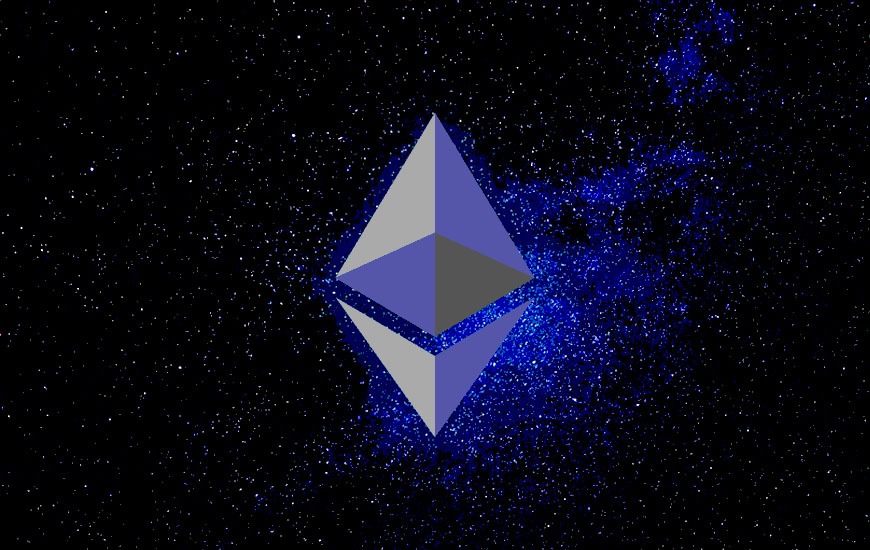- Ethereum is regarded as the second-largest cryptocurrency by market cap
- Plasma was better known as Sidechain, a stripped-down version of plasma called Minimal Viable Plasma
Ethereum saw its sheer success in 2020 when its native currency showed a bullish trend. But the use of the Plasma framework in blockchain technology was just not the right move forward for Ethereum. In the article, we list out the reason for the Plasma failure, where it went wrong, and despite all odds, how Ethereum comes out as a winner.
Ethereum is regarded as the second-largest cryptocurrency by market cap. This currency has had its shares of ups and downs since its launch in 2015. It was the concrete ground for the much-talked-about DeFi projects and Daaps very early and showed signs of belongingness to many investors. Ether is the native currency to regulate the Ethereum network.
Ethereum saw the success rate in 2017 and marked the history in that period. This blockchain became host to more users than its network capacity, which was designed to handle efficiently. When the world was talking about the scaling solutions of Ethereum and was discussing all the possibilities, Ethereum took a step forward and launched its plan to use the Plasma framework in blockchain technology.
But in 2021, the solution is nowhere and breathed its last. There is no doubt that Ethereum as a currency has shown a significant improvement and has surged exponentially in the previous 6 months, and this coin has reached to $2000 mark. But it is still away from complete implementation. The Ethereum 2.0, which has been introduced of late, is taking its own sweet time to roll into its starting steps and establish its footprints on the blockchain; it is time to say bye-bye to Plasma when we talk about the Ethereum future.
The fading phase of Plasma
In 2017, Ethereum was running a bullish rally and was in the limelight for its tremendous success on the blockchain network. The success was already known as it has the global exposure of Defi. Ethereum did not fail to meet the high expectations of the community, but it was not scaling.
Another concept was also introduced at a time when people were talking about Plasma. It was better known as Sidechain, a stripped-down version of plasma called Minimal Viable Plasma (MVP). Under the sidechain, the users have to leave the money with the operators of the sidechain while exiting the chain. It gives the basic idea of decentralization, which means maintaining a trusted intermediary. Plasma was built and was promised to tackle that very issue. But where the plasma was ensuring that the funds parked with the operators would remain safe with them in case of the operator’s false part, there were issues propping up in the sidechain at that time which were not easy to take a back seat.
Concerning issues
While it was clear that the funds will not be stolen, data unavailability was the prominent issue that propped up, and the operators were at ease as they could fiddle with the data by not publishing the transaction data. Even in this situation, the users had the option to take their funds and leave the chain. However, the exit from Plasma was not an easy cake for the users as it seemed.
There‘s a challenging period that every user has to pass as it delays the user’s exit by a week. During the challenging period, the user is required to initiate an exit transaction to withdraw funds from the Plasma chain. Then the user has to wait for some time, called the challenge period. Besides, the other user can also challenge the existing user who is on the challenge period in case if the user is found to be a defaulter. Hence, the challenge period can be canceled in that case.
Passing phase with positivity
The transition to Ethereum 2.0 is nowhere in sight during that time; it would not have existed. It is the sheer dedication of the ethereum developers who improved the network’s efficiency with transactions and made the user experience a blessing while maintaining the sanctity of the network in terms of security.
Before the transitioning phase of Ethereum from the Proof of Work to Proof of Stake, the developers of Ethereum started working on improving the Plasma that gave a new version of Plasma Cash. But this new version also brought with it new issues that required users to be online often during their challenge period.
Nevertheless, the current situation of Ethereum is good since it shows the bullish trend and crossed over the $2000 mark. After the launch of the deposit contract in 2020, the currency saw a bullish trend.
Steve Anderson is an Australian crypto enthusiast. He is a specialist in management and trading for over 5 years. Steve has worked as a crypto trader, he loves learning about decentralisation, understanding the true potential of the blockchain.


 Home
Home News
News










